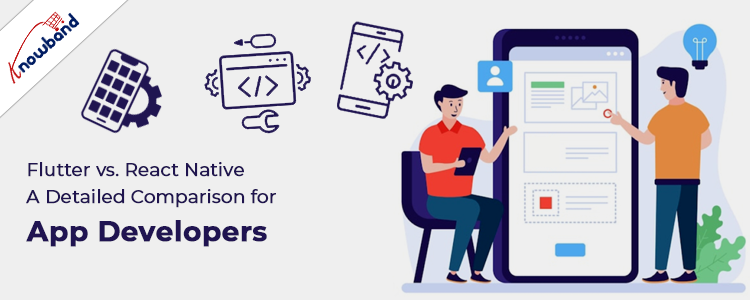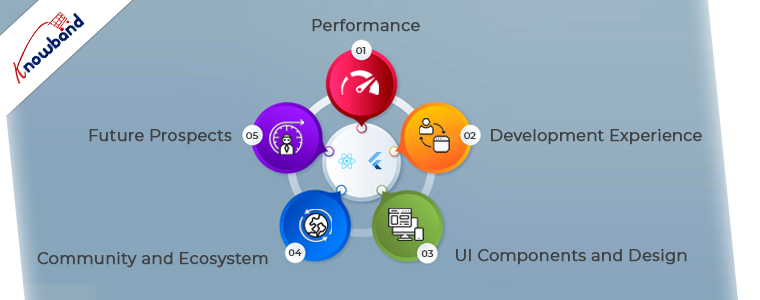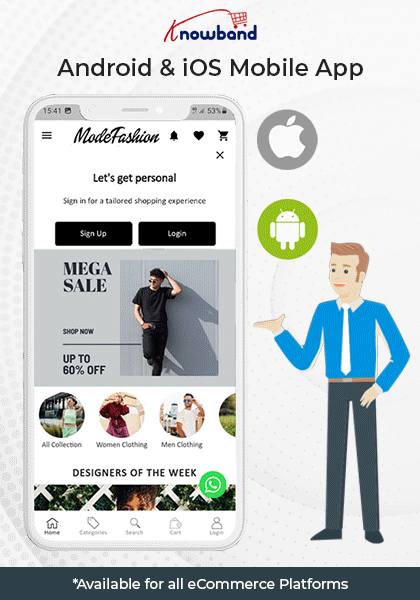In the dynamic world of mobile app development, two frameworks have emerged as frontrunners in cross-platform development: Flutter and React Native.
Both have their unique strengths, community support, and use cases and choosing between them is pivotal for app developers. Let’s start by focusing one by one on all the technical aspects to help you decide the right choice for your next project.
Performance:
Flutter, developed by Google, is renowned for its high performance. It uses the Dart programming language and compiles native ARM code, which enhances app speed and responsiveness. Furthermore, Flutter’s widget-based architecture also contributes to its performance, which allows more customizable and efficient rendering of UI components.
React Native, on the other hand, developed by Facebook, offers near-native performance by using a bridge to communicate with native components.
While this approach is effective, it can lead to slightly lower performance compared to Flutter, especially in complex or graphics-intensive applications.
Development Experience:
React’s hot-reload feature significantly speeds up the development process by allowing instant feedback on changes.
On the other hand, Flutter’s hot reload is equally impressive and offers a smooth and fast development experience. Dart, while less popular than JavaScript, is easy to pick up for developers with experience in object-oriented languages.
Therefore, the comprehensive documentation and rich set of widgets in Flutter further enhance the development experience.
UI Components and Design:
Flutter’s widget-based approach ensures a high level of customization and control over the app’s appearance and layout. Moreover, it comes with a rich set of Material Design and Cupertino widgets, enabling developers to create beautiful, natively compiled applications for both Android and iOS from a single codebase.
React Native, relying on native components, allows for the creation of apps that closely mimic native UI elements.
However, this can sometimes lead to inconsistencies across platforms, requiring additional effort to achieve a uniform look and feel.
Community and Ecosystem:
React Native has been around since 2015 and has built a large and active community. It boasts a vast ecosystem of libraries and tools, making it easier for developers to find resources and support for their projects.
Flutter, though newer, has seen rapid growth in its community and ecosystem. The availability of packages and support has significantly increased, closing the gap with React Native. Google’s active involvement in Flutter’s development also promises a bright future for its ecosystem.
Future Prospects:
React Native has established itself as a reliable choice for cross-platform development, with a proven track record and wide adoption, including high-profile apps like Instagram and Facebook.
Flutter, with its growing popularity and Google’s backing, is quickly becoming a favored choice for developers looking for high-performance and expressive UI capabilities. Its adoption by major companies like Alibaba and Google Ads signifies its potential for building commercial-grade applications.
Conclusion!
Choosing between Flutter and React Native boils down to the specific needs and preferences of the project and the development team. For projects that prioritize performance and custom UI design, Flutter might be the way to go. Conversely, if leveraging a vast ecosystem and using JavaScript is a priority, React Native could be more suitable.
Both frameworks are capable of delivering high-quality, cross-platform apps, and the choice between them should be guided by the project requirements, developer expertise, and long-term app maintenance considerations. As the mobile development landscape continues to evolve, both Flutter and React Native are expected to grow and adapt, offering even more to the developers and the mobile app industry.
Furthermore, at Knowband we also provide Flutter and Reach development services. Along with custom developments, we provide no-code Flutter app builders for Prestashop, Opencart, WooCommerce, and Magento 2 eCommerce platforms.
In case you have queries/suggestions, please feel free to get in touch at our email address support@knowband.com.





interesting post
thanks, interesting read